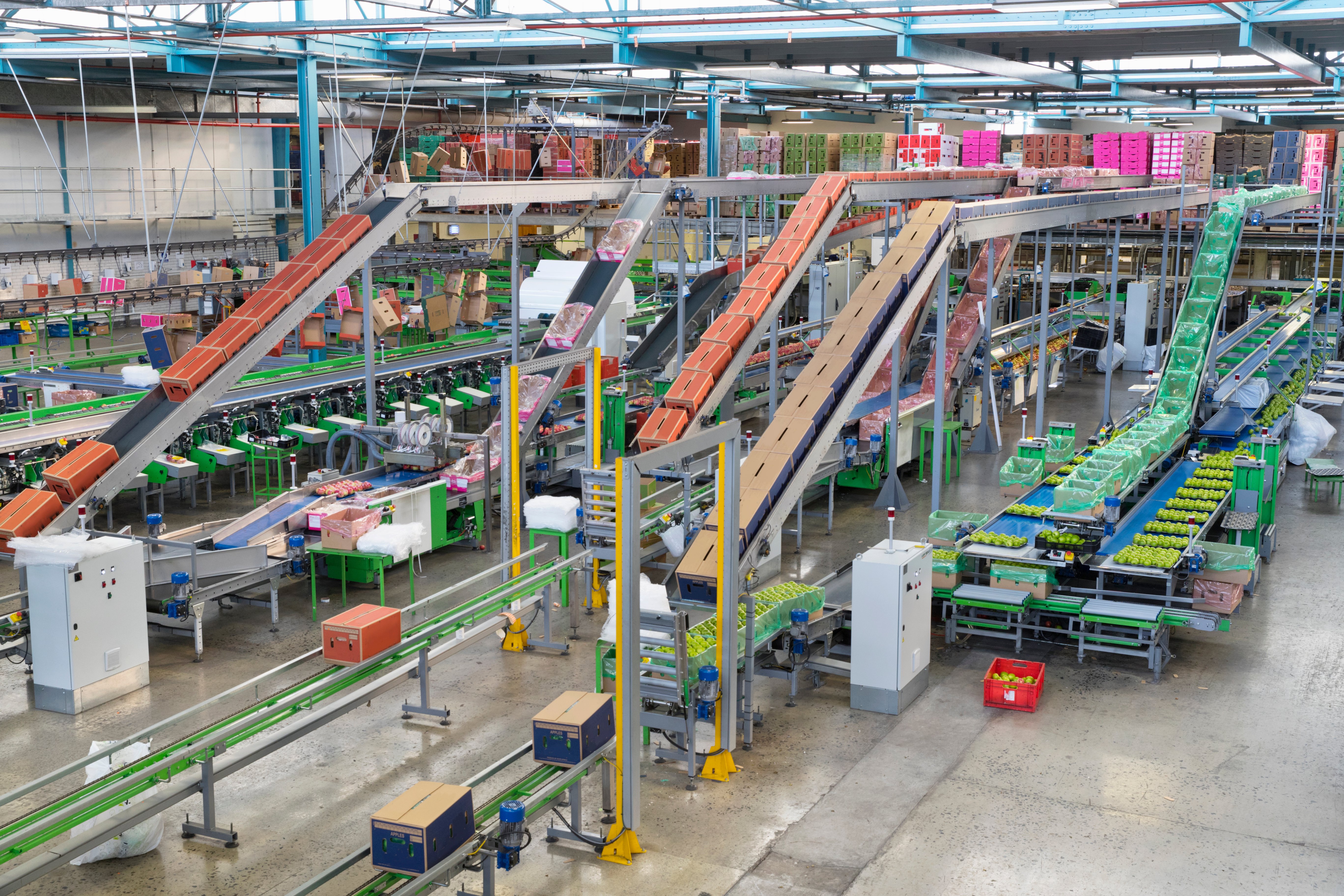There are many challenges that constantly arise in the industrial space. Depending on where it falls in the market, there are different trials your business will face. Still, all of those trials will be affected by ongoing industrial distribution trends.
Set your business up for success by focusing on issues that you can control. Addressing the changing trends in the market quickly so that you can keep growing is key. But how can you keep up with the most dominant trends?
Here at NetPlus Alliance, we have created a network of distributors who work with our suppliers to get the best deals and share essential knowledge. Today, we’ll highlight the top nine industrial distribution trends in the industry so that you can start making moves to tackle the next challenge with resilience.
Why Understanding Industrial Distribution Trends Is Key
If your team is not aware of ongoing changes that affect the industry, and more specifically your supply chains, you could be falling behind your competitors without even realizing it. Staying on top of trends, keeping your business relevant, and maintaining a solid bottom line is key for your long-term business health.
From remote selling to changes in the variety represented in your supply chain, there are many things you can do to ensure your business is prepared to morph and grow with the current trends. If you don’t pay attention to or understand the trends, you might miss big opportunities.
1: Increased Online and Digital Presence
One of the most significant industrial distribution industry trends that businesses are quickly becoming aware of is the increased digital presence across the board.
While the COVID-19 pandemic accelerated this change, the shift to digital and virtual tools was already happening in the years leading up to this rapid change. Remote B2B sales are proving to be effective, and B2B customers will continue to favor this type of sales model moving forward.
If your business doesn’t yet have a robust e-commerce platform, it’s time to invest in the change. To keep up in industrial distribution, putting energy into generating and retaining sales through e-platforms is key. New digital strategies will bring additional challenges to your business, but they will also allow you to increase revenue in ways you didn’t previously imagine.
2: Diversifying Revenue Streams
Another trend rapidly spreading throughout the industrial distribution scene is the diversification of where you make your money and what markets you supply.
Rather than putting everything into a single channel, more businesses are spreading out with horizontal marketing plans to grow their market share and make more sales. Investing in initiatives that allow you to identify growth opportunities is key to being able to do this.
Think about what else your customers are buying. Can you add it to your inventory? Stratifying your inventory has always been a great way to improve profitability, which remains true in the current market. Expanding your sales through existing customers is being done everywhere, so what are you waiting for?
3: Expanding Hiring Pools
Distributors finding new and exciting ways to spread out into adjacent channels are doing so with new types of talent. Could your team use stronger positions and new kinds of employees to expand how you do business?
Plus, it can be hard to find employees with the traditional skill package that you are used to hiring in the current market. Expanding to new talents and training them on industry-specific knowledge is the way to move forward and keep growing.
Think outside the traditional hiring box as you continue to grow your business. Top talent can make a huge difference in your long-term business growth.
4: Examine Your Supply Chain For Resiliency
If there’s one thing the COVID-19 pandemic demonstrated best, it was that the traditional supply chain model is a dangerous thing for many small businesses. A single link in the chain closing or slowing down affects everything.
Can your supply chain stand up to rapid changes? Examining your supply chain to ensure that it is predictable, flexible, efficient, and cost-effective is key. Anticipating disruptions is always going to be difficult, but you can test the resiliency of your supply chain by testing its flexibility and crisis management responses.
In many cases, businesses in the supply sector will find that the best way to improve their supply chains is to implement additional digital oversight and management. Logistics are often complex, and the technology to manage such complexities exists.
Without the necessary products or supplies, your business cannot keep running. Addressing supply chain problems and concerns thus remains a top risk management priority in the industry.
5: Industrial Distribution and Digital Management
The increase of digital management tools in the industrial distribution sector is not limited to just improving supply chains. Businesses in every part of the industry are using analytical and digital management tools to improve their bottom lines.
There are numerous areas where digital tools can be implemented to increase efficiency and boost your revenue:
- Inventory management
- Warehouse design and flow
- Delivery setup
- Demand planning and tracking
- Operational use case analytics
- Delivery route optimization
The tricky part of digital tools is that there are so many to choose from, and it can be hard to know how to best implement them. Luckily, members of our buying group can utilize our business service providers. Implementing digital management tools doesn’t have to be intimidating if you approach it with knowledge on your side.
6: Learn To Manage Fluctuating Demands
This trend is particularly important to industrial distributors who consider themselves to be omnichannel businesses. Those finding the best success at this time can track and recognize the constant fluctuation in demand within their marketing channels.
Some sectors have rapidly recovered from downturns in business, while others never stopped growing, as you can see in market reports released throughout 2020 and into 2021. Companies in these sectors need to be effective at monitoring, managing, and supplying as required by these fluctuations.
Being creative about how to meet demands without overdoing it and spending too much is critical. Balancing fulfillment costs, inventory costs, remote selling savings, and every other factor affected by the changing demands is a difficult feat. Still, taking aggressive steps to do this effectively is going to be key in the coming years.
Investing in business planning that accounts for fluctuating demand will help your business ensure it has a path to long-term success, even when presented with new situations.
7: Customer and Client Connection
To effectively market to customers in an industry with increasing competition, industrial distributors need to learn more about their customers. Learning more about customers enables better service, sales, and product expansion to match their needs.
With information collection, you can find new sales opportunities and improve your business model. Industrial distributors use advanced CRMs and marketing plans to use collected data effectively and you can too.
8: Importance Of Improved Cash Management
Another industrial distribution industry trend is how tightly distributors need to manage their bottom lines due to changes across the industry.
Cash management has always been necessary for success, but the margins for profit are narrowed in some parts of the sector due to a variety of factors:
- Material price increases
- Fulfillment cost increases
- Fluctuating demand
- Competition taking sales away
- Tax and tariff increases
Cost management must be handled aggressively if you want to keep seeing positive revenue flow. Digital technology and process analyses can help identify areas for improvement.
9: Workflow Automation
Workflow automation is still a massive trend in the industrial distribution sector. Additional automation is often how companies are seeing better efficiency within their supply chains. Using tools like smart scanning and cloud technology allows companies to save money while better managing their inventory, resources, and warehouses.
The increased visibility and transparency seen throughout the industry when smart technology is added to increase automation makes a vast difference in the overall business. This integrated technology allows you to better visualize costs, turnover, growth, sales, inventory, and much more.
Some companies are even using data exchange to work more closely with businesses in their supply chain or buying groups to communicate inventory, sales, and more automatically.
Make Industrial Distribution Industry Trends Work For You
These trends, gathered together, are movements being seen in the industry in response to the changes happening in the world of industrial distributors. However, that doesn’t necessarily mean that your business needs to be prepared for each of these trends.
It’s up to you to take a deep dive into the trends that feel most relevant and see what you can do to ensure the security of your business. Where can you see the most significant improvements?
Many small business owners may feel overwhelmed at the idea of tackling all of these trends. Work closely with the resources provided by a buying group and fellow industrial distributor members to make improving your business more effective than ever before.





